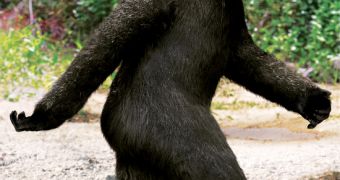A team made up of several forensic scientists has recently gone public with the news that, as DNA evidence shows, the elusive Bigfoot is not just a product of people's imagination.
Thus, claims that this creature truly exists are as true to facts as it gets, seeing how there is sufficient scientific evidence to support them.
The forensic scientists now arguing to have succeeded in proving the existence of Bigfoot beyond a shadow of a doubt have reached this conclusion after conducting DNA tests on as many as 111 specimens of hair, blood, skin and other tissue supposedly belonging to this controversial creature.
More precisely, these DNA tests allegedly helped them prove that the Sasquatch emerged as a self-standing species as a result of several modern human females' mating with an unidentified primate species, Mongabay reports.
By the looks of it, the first Sasquatch was born roughly 13,000 years ago, the researchers that have investigated this issue explain.
As lead author Melba Ketchum puts it, “We soon discovered that certain hair samples—which we would later identify as purported Sasquatch samples—had unique morphology distinguishing them from typical human and animal samples.”
Furthermore, “Because some of the mtDNA haplogroups found in our Sasquatch samples originated as late as 13,000 years ago, we are hypothesizing that the Sasquatch are human hybrids, the result of males of an unknown hominin species crossing with female Homo sapiens.”
Melba Ketchum and his fellow researchers hope that, when faced with these findings, the scientific community will be left with no choice except admit the existence of Bigfoot, and even agree to name the species.
From their standpoint, Homo sapiens cognatus, which translates as “blood relative to Homo sapiens,” would be a most befitting scientific name for these controversial creatures.
Still, given the fact that the journal that published this study (i.e. the DeNovo Scientific Journal) has only recently been created by Melba Ketchum and his team, odds are the scientific community will take these claims with a pinch (or maybe even a bucket, some might say) of salt.
“Rather than spend another five years just trying to find a journal to publish and hoping that decent, open minded reviewers would be chosen, we acquired the rights to this journal and renamed it so we would not lose the passing peer reviews that are expected by the public and the scientific community,” Melba Ketchum offered as an explanation for his and his team's decision to create their own scientific journal in order to publish this study.

 14 DAY TRIAL //
14 DAY TRIAL //